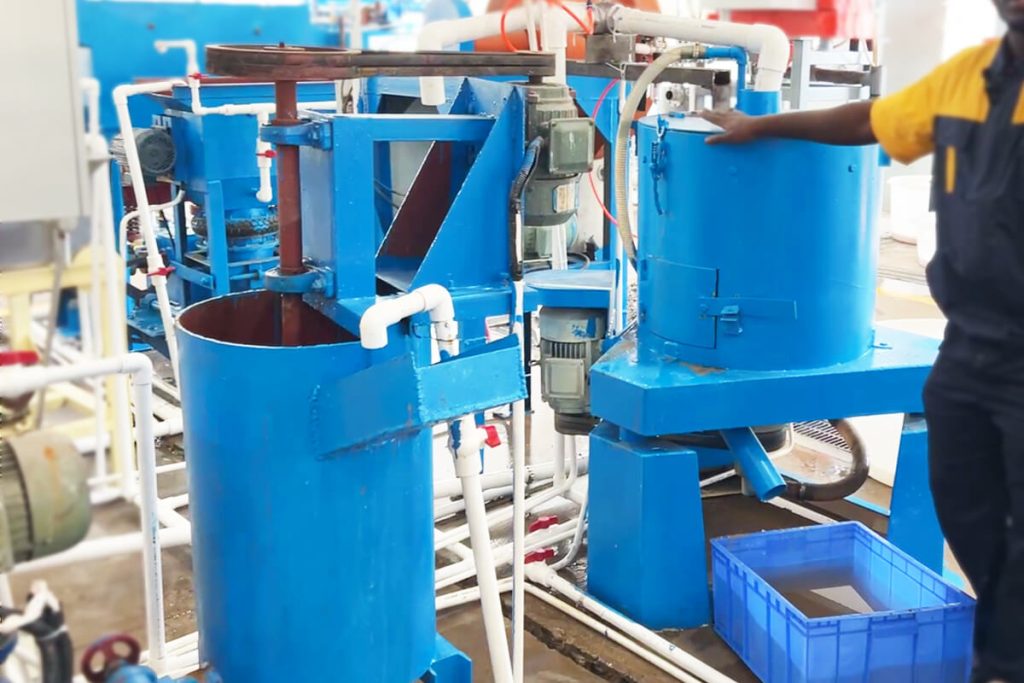Centrifugal Concentrator Can Even Separate Tailings

Centrifugal concentrators are often key equipment in the mining industry, using centrifugal force to separate and concentrate valuable minerals from other substances. It can efficiently process large quantities of ore and recover fine particles. Its high efficiency and continuous operation capabilities make it a cost-effective solution for mineral processing plants, especially gold processing plants. The centrifugal concentrator uses centrifugal force to concentrate heavy materials, allowing for higher recovery rates and reduced chemical use compared to traditional methods such as cyanide leaching or amalgamation.
Application: Tailings centrifuge also has a wide range of applications. It can recover heavy metals in tailings and separate light and heavy metals. Tailings with differences in specific gravity can be separated and enriched. It can be recycled for precious metals with high enrichment ratios. It’s widely used in tin, gold, lead-zinc, or other tailings plants. The centrifuge is placed in front of the flotation machine on the production lines of many mineral processing plants. It is now more popular. The tailings centrifuge is placed before the flotation machine to recover single and wrapped heavy metals with high specific gravity differences. The effect is good; the recovery rate is high.
Working Principle
The centrifugal acceleration generated by the drum rotation is basically to dozens of times the acceleration due to gravity, which strengthens the gravity separation process, so it is an efficient fine-grained tailings gold separation equipment. During operation, the drum rotates at a certain speed, and the slurry is fed into the inner wall of the drum through the ore feeding device. When the slurry rotates at high speed with the drum, the higher-density mineral particles are subjected to a large centrifugal force. They are eventually deposited on the inner wall of the drum to rotate with them. In contrast, the lighter particles are pushed to the outer wall and rotate at a certain helix angle during the rotation. It moves from the feeding end to the ore discharge end along the slope of the drum and is finally discharged into tailings. On the other hand, heavier particles move towards the center, resulting in efficient separation.

